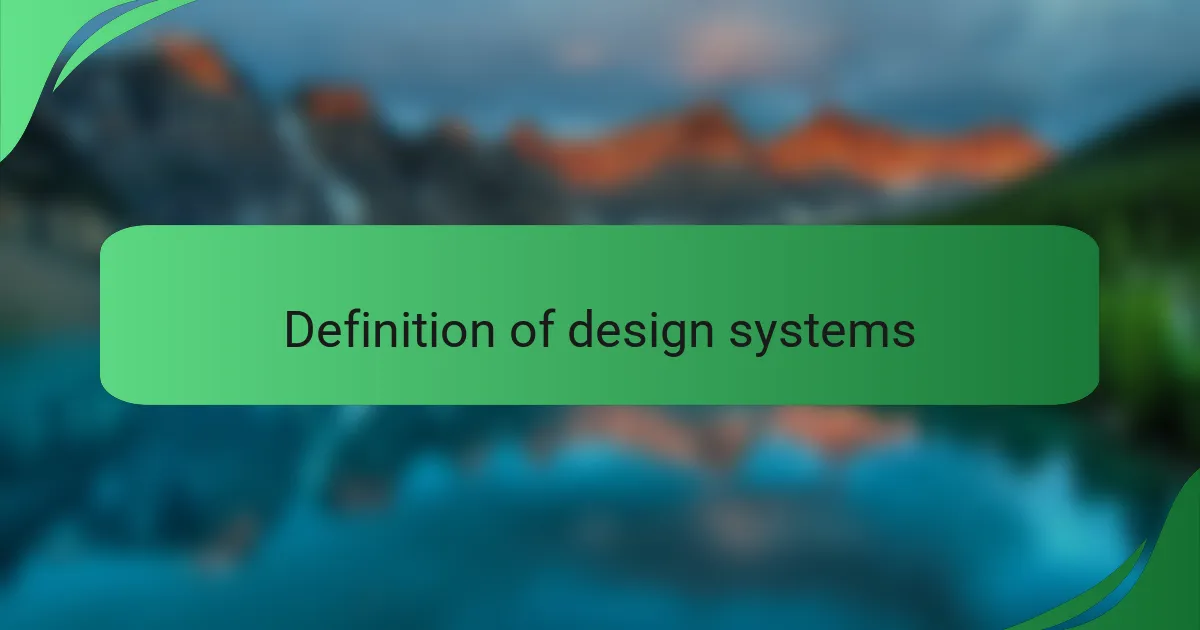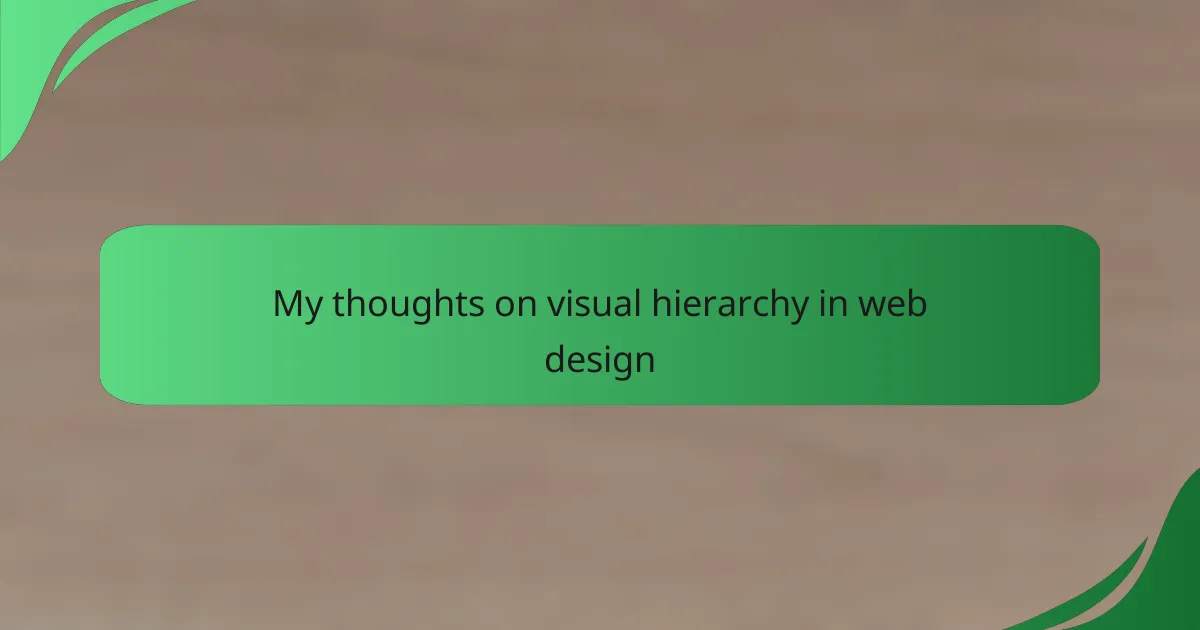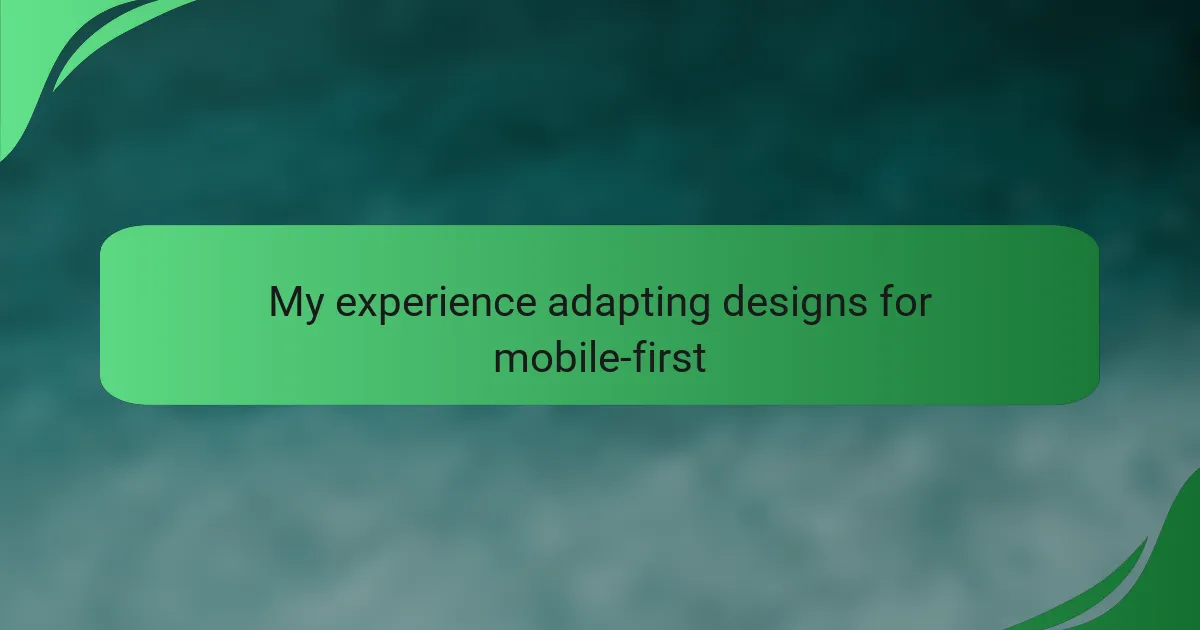Key takeaways
- Design systems enhance consistency and collaboration, improving overall team communication and workflow.
- Figma’s real-time collaboration and reusable components are crucial for maintaining design coherence and efficiency.
- Creating a design system requires a structured approach, including research, component creation, and continuous team alignment.
- Challenges include managing components effectively, ensuring adherence to guidelines, and balancing flexibility with structure.

Definition of design systems
Design systems are essentially a collection of reusable components and guidelines designed to create consistency within a product’s design. In my journey of creating design systems in Figma, I realized that clarity and coherence are crucial. It felt incredibly rewarding to see different parts of a project come together seamlessly due to a well-structured system.
From my experience, a design system not only improves efficiency but also enhances collaboration among team members. When I first implemented a design system, it transformed the way my team communicated. It felt like we were all on the same page, working towards a common vision.
- A design system includes:
- Reusable components (buttons, input fields, etc.).
- Style guides (color palettes, typography, etc.).
- Documentation for usage and best practices.
- Accessibility guidelines to ensure inclusivity.
- Version control to manage updates and revisions.

Importance of design systems
Creating a design system is like laying a solid foundation for a building. It ensures that everyone in the team is on the same page, which is crucial for maintaining consistency throughout the project. I remember working on a large-scale application where different teams had their own interpretations of style guidelines. It became chaotic quickly, with inconsistent buttons and colors. Once we established a design system, it transformed our workflow and improved collaboration immensely.
Design systems are not just about aesthetics; they also enhance accessibility and usability. A well-structured design system helps in creating more intuitive interfaces, allowing users to navigate effortlessly. For instance, when we introduced a standardized component library in Figma, I saw a noticeable decrease in the time it took for designers and developers to align on features. The transformation in our process was rewarding – it felt like we were finally in sync, creating a better product for our users.
- Establishes brand consistency across products
- Reduces design and development time with reusable components
- Enhances collaboration among team members
- Improves user experience through cohesive design
- Supports scalability as the project evolves

Overview of Figma features
Figma is a powerful design tool that has transformed the way I approach creating design systems. One of its standout features is the ability to collaborate in real-time. I remember a late night spent tweaking a design with a colleague across the globe; we were able to see each other’s edits instantly, which felt like magic at that moment. This feature not only enhances creativity but also fosters a sense of team unity, even when physically apart.
Another reason I appreciate Figma is its versatile design components. Being able to create reusable components simplifies the design process significantly. I often find joy in building a library of buttons and icons that can be easily updated across multiple projects. This not only saves time but also ensures consistency, a crucial factor when designing cohesive user interfaces.
- Real-time collaboration allows multiple users to edit and comment simultaneously.
- Components and libraries help maintain consistency and streamline workflows.
- Vector networks enable complex shapes to be designed effortlessly.
- Prototyping tools allow for testing interactions directly within the interface.
- Plugins enhance functionality, enabling tasks like accessibility checks and design export automation.

First steps in Figma
Diving into Figma for the first time is both exciting and a bit overwhelming. I recall my initial attempts; I was amazed by the powerful features but also felt lost navigating the interface. It took some time to find my groove, but once I did, Figma became a creative playground where I could experiment with ideas.
Here are a few essential steps to kickstart your journey in Figma:
- Create a new file: Start with a blank canvas, where your imagination can run wild.
- Familiarize yourself with the interface: Explore the tools and panels to understand their functions better.
- Draw basic shapes: Practice using the shape tools to get comfortable with creating visual elements.
- Work with layers: Learn how to manage layers to keep your design organized.
- Utilize components: Start building reusable components to streamline your workflow as you create.

My design process in Figma
Creating a design system in Figma is an exciting journey, steeped in exploration and creativity. I remember when I first started, there was a mix of excitement and a bit of apprehension about how to structure everything coherently. Diving into the world of components and styles felt like unearthing a treasure trove; each selection opened up new possibilities in my design workflow.
To kick off my design process in Figma, I focus on the following key steps:
- Research and Define: I prioritize understanding user needs and business goals, weaving these insights into my designs.
- Component Creation: Building reusable components helps maintain consistency and speeds up the design process.
- Style Guide Development: I establish typography, color palettes, and spacing guidelines to ensure a cohesive visual language throughout the system.
- Prototyping: Crafting interactive prototypes in Figma assists in visualizing user flows, allowing for early testing and feedback.
- Collaboration: Keeping communication open with developers and stakeholders during the design phase helps align everyone on the vision and functionalities.

Challenges faced in Figma
When I first started creating design systems in Figma, I quickly realized that managing components could get overwhelming. I remember spending hours trying to organize my styles and components, only to find out later that some of them were duplicated or out of date. It was a steep learning curve that tested my patience, but it ultimately made me appreciate the importance of a well-structured design system.
One major challenge was ensuring that all team members adhered to the system. I found myself constantly explaining principles and convincing others to stick to our established guidelines. This experience taught me that communication is key; it’s not just about having a design system but also about fostering a culture where everyone values and understands its purpose.
- Inconsistent component naming conventions led to confusion.
- Difficulty in updating symbols and styles across projects.
- Managing feedback and revisions while keeping the design system coherent.
- Ensuring team collaboration without chaos.
- Balancing flexibility in design with the rigid structure of the system.




